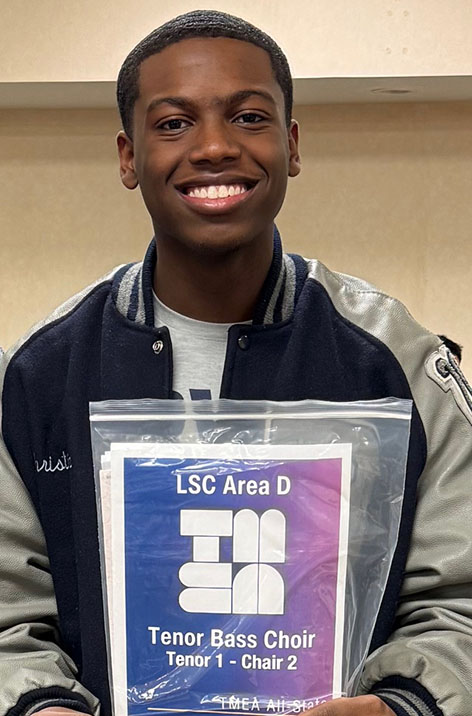Technology has become an integral part of education and teachers must equip students with the tools to succeed in their future careers. Each subject must assess the best way to integrate technology to promote learning and understanding. Norseman staff members took an in-depth look at technology usage across campus and how different teachers utilized it to increase student learning.
Art
Students have always used tools, stencils, paper, paint and other media to create pieces of art, but technology is increasingly becoming a part of that process. Technology is being used in art classrooms as a way for teachers to increase learning as well as a way for students to create new pieces.
“We currently use a document camera,” art teacher Jennifer Easterling said. “We are able to video what we are doing for a piece of art, so we can demonstrate and then project it on to a large screen so all students are able to view it at once.”
Through grants or awards teachers have also been able to acquire technology to use in the classroom. Students are able to use equipment like iPads to make the artistic process easier and more streamlined.
“I won a grant for a set of iPads a couple of years ago, so my classes are able to use them to reference images and look those up or to help draw and combine images to create art,” Easterling said. “It makes things quite a bit faster.”
After creating a piece most students would like to display their work for others to see, but because of the media used in some pieces that can be difficult. Teachers have began to use digital portfolios to display student work in a form that can be taken anywhere.
“I have students create digital portfolios through iMovie, art teacher Kim Marshall said. “They use digital cameras, take pictures of their artwork, embed music, and make videos using voice overs in the creation of their a digital portfolios. “
These portfolios benefit students as not purely a means of preserving their work, but also a way to showcase it colleges and employers.
“I think it’s a good way for them to access their art from anywhere and show someone instead of having to have the works of art physically in front of them,” Easterling said. “Students can use their portfolios when trying to earn a scholarship and it’s something I can easily access so I can go back and look at the portfolios.”
The most important part of the portfolio is the fact that they are able to see their progression over a time period and acknowledge how far they have come as art students.
“It gives them an idea of how they have progressed from the beginning to the end of the school year and they’re able to talk about their artwork, what they did, what they may improve, and what their favorite project was.”
Math
Though the means of teaching mathematics have transferred from chalkboards, to white boards, to overheads and projectors the platform the problems are written on does not add value to student’s lives. Applying advancements in technology so students gain understanding through function is the true purpose behind the technological push.
The technology being used in the classroom ranges from calculators and interactive whiteboards to online notes and students cell phones. Some teachers record their notes either through video files or scanned images to help students fill in the gaps when they miss information.
“I have many students in extracurricular [activities] that are gone,” math teacher Matthew Rice said. “The notes give them a chance to get it without being in class.”
The technology in these math classrooms, such as the calculators and smart boards, not only make things quicker, but help extend the thinking of the students even farther than before.
“Calculators make things faster, but students have to know how to use it and that’s one of the biggest things that I try to teach,” Rice said. “They have to understand how to do the problem,” Rice said. “The calculator is the tool that helps them through the process, but they must first understand the mechanics behind it.”
Foreign Language
Students are required to take at least two years of a foreign language to graduate on the recommended plan.
Students may struggle with acquiring a second language in high school and many teachers have started using websites that include speaking, listening, writing, and reading to help students practice using the language and impact learning in a positive way.
“Duolingo is a program that we use once a week,” Spanish teacher Alex Morales said. “Every teacher gets the COWs (Computers on Wheels) and we usually do 50 points a week. The program is a lot like Rosetta Stone, but it’s free and we’ve seen a huge difference with the students using Duolingo because we enjoy doing it.”
Spanish teacher Allison Robertson also takes advantage of the internet in assisting her students with language acquisition.
“I use edmodo as a way for students to turn in work and take opinion polls,” Robertson said. “When students interact with the programs, they interact with the material and create something that’s new or original and then are able to share it immediately with an authentic audience, which is better than showing static media that’s not interactive.”
Not only websites utilized in foreign language classrooms, but other forms of technology are also used like smartboards, laptops, and flip cameras.
“I do commercials,” Morales said. “They use their phones to film themselves teaching commands in Spanish and then they can email it to me or bring it in to show the class and make a full production with iMovie.”
Teachers have always worked to find a way to engage students, technology has only made that process simpler as it pushes students to think for themselves and create and understand on a new level.
“They’re forced to learn information and apply it right away while making a lot of small choices which add up to really revealing what they understand,” Robertson said.





